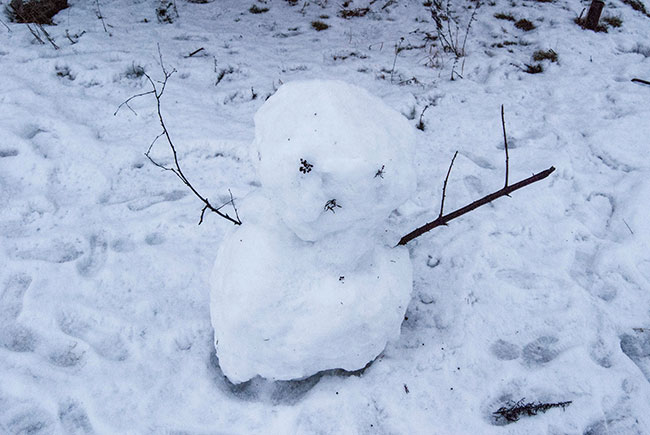|
But let justice roll down like waters, and righteousness like an ever-flowing stream.
Amos 5:24
In 23th of January several newspapers in UK such as The Daily Mirror and The Telegraph published news online concerning the advice which the environmental agency had given for the people in UK to protect them from the melt water when the unusually high volume of snow will defrosts due to the warming weather. The advice was to build snowmen in every garden and driveway to slow down the thaw a bit and lead to less surface water. This child’s game would gather the wide layer of snow into compacted piles, and as a joint effort conducted by everybody, might have an effect in preventing urban flood. Such a method might sound ridiculous especially when compared to major waterways and their flood risks.
The means to sustain the effect of flooding as an extreme weather event are presented by the Finnish environmental official as following. Chosen measures for flood protection go according to their effect, costs and benefits which are also coordinated with other processes related to the management of water and their mutual priority is estimated. As a new economic perspective announced in the context of Rovaniemi, the “capital” of Finnish Lapland, executing partners which would simultaneously provide new financing opportunities are seen as part of the process. These requirements would mean outsourced funding and contractor from private sector who would act within the restricting norms but where the prioritizing of certain means and matters would restrain others.
In this frame, is there anything we can learn from the snowman case? Is it simply an example of uncertain an inefficient way to prevent flooding or just a fairytale? First of all we should have a look in what kind of environment this snowman ‘method’ was supposed to be carried out. In UK the urban landscape is much more heavily and densely built than in Rovaniemi. For example in the housing areas in Cardiff in Southern Wales, there was hardly any green areas between the pavement and roads, hardly even where the trees grow, and the rain water is directed from the rooftops to the pavement from where it flows (in open air) towards the road and finally down to sewer. Also the clearing of the snow even with proper vehicles would be practically impossible to proceed in these areas since there is a very limited space where to move and pile the snow because of the dense infrastructure for example for the most of the cars, the only place to park them is between the road and pavement. Also the form of housing has changed in this kind of areas from long-term family housing to short-term shared housing. This has led to the situation where gardening practice has disappeared since there is no continuity in taking the effort and investing to it during the short stay. The unkempt front yard and the backyard gardens are often paved by the landlords to keep them tidy. This has reduced the water holding capacity of the ground since the water cannot soak or evaporate directly from the soil.

Photo: Joonas Vola
Making a snowman by rolling a piling up snow makes the molecule structure more compact. Also the form of snowman makes it capture less rain and sunlight than the wide layer of snow on the ground*. If some clothes are added on it, this clothing will protect and isolate the snowman from sun and rain and capture part of the water coming out from the melting snow. Also making the snowman is something that everybody can take part of: it does not require heavy machinery, fuel, manpower or lot of time. A snowman compared to simple pile of snow is also an aesthetic act; something that makes pleasant from something that could be risky and frightening instead.
What we can learn from the story of snowman is that the ways to perceive the flood protection should be something locally and regionally oriented, as simple as possible, taking into account the timescale of the emerging problem, having a social acceptance and using the local culture as strength instead of an obstacle. As Dr. Sim Reaney said "It is action at a sensitive place in the landscape. You are doing something where it needs to happen" (BBC 24.1.2013). To have as small scale act for change, most likely will also cause smallest possible undesired side effect. Right scale of means for right matters.
Happy Holidays!
PS: Merci beaucoup Emilie :*
Sources:
|